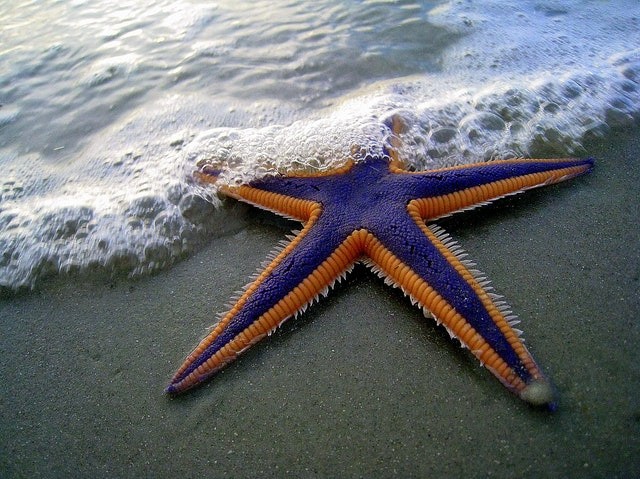Following Storm Arwen, hundreds of starfish and other marine animals washed ashore on a beach.

At Culbin Sands, near Nairn, Charlie Maciejewski of Inverness came across the sight.
According to him, the stranding, which included clams and crabs, spanned a 100-meter (328-foot) stretch of sand on the Moray Firth coast.
Extreme weather, according to the Marine Conservation Society (MCS), is frequently the cause of such instances.
It's unclear whether any of the creatures survived. According to MCS, some creatures washed ashore alive found their way back to sea in similar circumstances, but others died on the spot.
Starfishes in the Beach
Strong gusts and big waves killed hundreds of starfish and shellfish over kilometers of beaches in West Norfolk during Storm Emma in 2018.
Thousands of starfish were stuck on a beach on Black Isle in the Moray Firth for weeks in 2017, a phenomenon known as starballing.
The majority of the species discovered at Rosemarkie were supposed to have washed back out to sea in the following days.
After seeing starfish alter their location the previous year, Plymouth University's Marine Institute experts invented the term "starballing."
Storm Arwen slammed the UK on Friday, with gale-force winds battering Scotland's east coast.
Related Article : Residents Alarmed as Thousands of Dead Sea Creatures Washed Ashore in England Beaches
Dead Seal Pups
Hundreds of seal pups were discovered dead at a wildlife reserve in the Scottish Borders after the storm.
The National Trust for Scotland, which manages the St Abb's Head location, claimed it has never seen anything like it.
According to the report, there were 224 dead pups in a tiny stretch of the bay at Pettico Wick, with more washing ashore.
Starballing
Scientists believe they may have figured out why common starfish ashore in large numbers on beaches with high winds and tides.
The species Asterias rubens has been recorded rolling around the seafloor with arms coiled into a spheroid form, a phenomenon called 'starballing' by researchers at Plymouth University.
It's unclear if this is a purposeful tactic to assist the generally slow-moving species move their position. However, some have been observed elevating a single arm into the water column before migrating, as if testing the environment. The finding was uncovered in 20 meters of water during a video assessment of the Kingmere Marine Conservation Zone off the coast of Sussex.
Dr. Emma Sheehan, a Research Fellow at the Marine Institute in Plymouth, explained:
"The common starfish is a slow-moving creature, moving at only 67 centimeters per minute, with thousands of tube feet navigating the terrain as it searches for food. Its larvae have long been thought to be the reason for the species' widespread distribution across the North Atlantic. Still, this newly discovered phenomenon of 'starballing' could both shed more light on their distribution and explain how mass strandings occur."
Dr. Sheehan stated, "At this moment, we simply cannot determine whether the starballing individuals were washed off the seabed by the powerful tidal flow, or whether the individuals permitted themselves to be transferred." "It's a theory we'll investigate more in the future."
For the latest animal news, don't forget to follow Nature World News!
© 2025 NatureWorldNews.com All rights reserved. Do not reproduce without permission.

